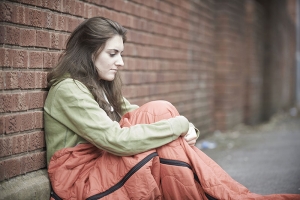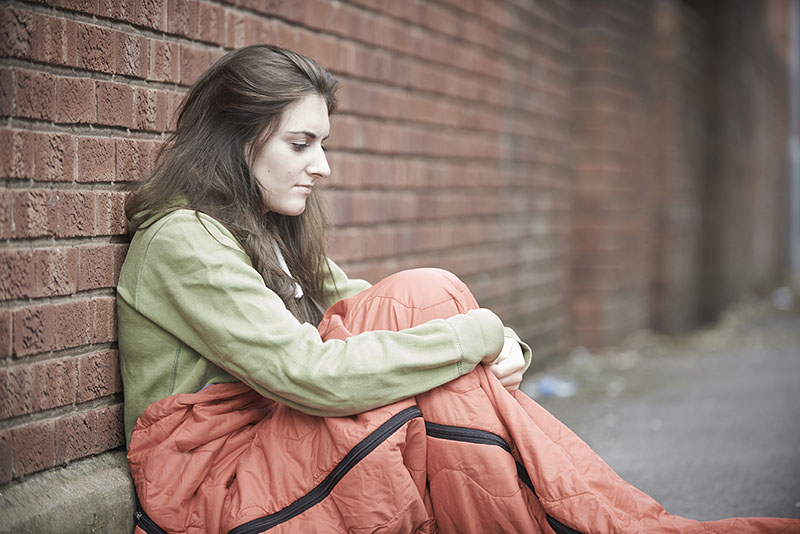PA Received a C on Women’s Poverty and Opportunity Index
 According to a new report released today by the Institute for Women’s Policy Research (IWPR), Pennsylvania received a C on indicators related to women’s poverty and opportunity, ranking 21 in the United States. IWPR’s Poverty & Opportunity Composite Index scores states based on four indicators: educational attainment, business ownership, poverty, and access to health insurance coverage. Overall, the status of women in these areas has worsened in the majority of states (29) in the last decade. In 21 states and the District of Columbia, women’s status with regard to poverty and opportunity has improved. In Pennsylvania, the Poverty & Opportunity score has improved since 2004 from a rank of 26 and grade of C- in 2004 to a current rank of 21 and grade of C.
According to a new report released today by the Institute for Women’s Policy Research (IWPR), Pennsylvania received a C on indicators related to women’s poverty and opportunity, ranking 21 in the United States. IWPR’s Poverty & Opportunity Composite Index scores states based on four indicators: educational attainment, business ownership, poverty, and access to health insurance coverage. Overall, the status of women in these areas has worsened in the majority of states (29) in the last decade. In 21 states and the District of Columbia, women’s status with regard to poverty and opportunity has improved. In Pennsylvania, the Poverty & Opportunity score has improved since 2004 from a rank of 26 and grade of C- in 2004 to a current rank of 21 and grade of C.
In every state, there are more women living in poverty than men. In Pennsylvania, 86.5% of women over 18 are living above poverty, compared with 89.3% of men, ranking the state number 15 nationally.
Hispanic, black and Native American women are much more likely to live in poverty than white and Asian women. Women remain less economically secure than men even though women throughout the United States continue to outpace men in earning college degrees. In Pennsylvania, 28.6% of women hold a bachelor’s degree or higher, compared with 28.7% of men, ranking the state 27 overall.
The parallel trends toward greater educational attainment and greater economic security is especially pronounced among Millennial women. In Pennsylvania, Millennial women are more likely to have a bachelor’s degree or higher (40.8%) than Millennial men (31.9%). Yet, Millennial women in Pennsylvania are also more likely to live in poverty than Millennial men: 20.8% of Millennial women live below poverty, compared with 16.5% of Millennial men.
As more women attain a college education, the gender wage gap continues to be a persistent issue for working women. If women received equal pay, IWPR researchers estimate that the poverty rate for all working women in the United States would be cut by more than half, declining from 8.1 percent to 3.9 percent.
“Women in Pennsylvania have made significant educational gains in the last 25 years, but still face a persistent gender wage gap and higher rates of poverty than men in the state,” said Janice R. Black, President and CEO, The Foundation for Enhancing Communities. “These trends are even more pronounced for women of color requiring more opportunities that increase all women’s access to economic opportunity, narrow the wage gap, and improve the well-being of women, families and communities in Pennsylvania for generations to come.”
The Foundation for Enhancing Communities is helping to improve the odds for women through its Women’s Fund, one of several sponsors of the IWPR’s Status of Women in the States: 2015 report. Since 2008, the Women’s Fund has granted $79,429 to nonprofit organizations in the South Central Pennsylvania counties of Cumberland, Dauphin, Franklin, Lebanon, and Perry, and the Dillsburg Area serving women and girls. The grants focused on issues of self-sufficiency, health and human services, and education. Data obtained from the Status of Women in the States report will be used to better align the grantmaking resources of the Women’s Fund to match the community’s needs and to educate our local community on the current needs of women and girls.
You can help make a difference for women in South Central PA by joining the Dream Team of the Women’s Fund. For $16.66 a month, you can give the gift of hope to women and girls in the South Central Pennsylvania counties of Cumberland, Dauphin, Franklin, Lebanon, and Perry, and the Dillsburg Area. Make your pledge today of $1,000 or $16.66 per month for 5 years to become a member of the Dream Team. To start your Dream Team pledge or learn more about the Women’s Fund, please visit www.tfec.org.
Rankings for other indicators of status in Pennsylvania compared to the other states and the District of Columbia.
Highest Level of Educational Attainment, 2013
- Ranked 26 (10.5%) for women having less than a high school diploma
- Ranked 50 (36.1%) for women having a high school diploma or equivalent
- Ranked 49 (24.8%) for women having some college or an associate’s degree
- Ranked 27 (28.6%) for women having a bachelor’s degree or higher
Poverty and Opportunity Among Young Women and Men, 2013
- Ranked 12 (86.1%) for women having health insurance, aged 16-34
- Ranked 12 (79.9%) for men having health insurance, aged 16-34
- Ranked 14 (40.8%) for women having a bachelor’s degree of higher, aged 25-34
- Ranked 11 (31.9%) for men having a bachelor’s degree of higher, aged 25-34
- Ranked 16 (20.8%) for women living below poverty, aged 16-34
- Ranked 25 (16.5%) for men living below poverty, aged 16-34
Households Below Poverty by Household Type, 2013
- Households Headed by Married Couples
- Ranked 14 (5.4%) with children
- Ranked 19 (3.0%) without children
- Households Headed by Single Women
- Ranked 29 (43.3%) with children
- Ranked 19 (19.5%) without children
- Households Headed by Single Men
- Ranked 30 (24.0%) with children
- Ranked 27 (16.8%) without children
This is the second in a series of releases from IWPR’s Status of Women in the States: 2015 project. In March 2015, IWPR released the data on women’s employment and earnings by state, including projections on when women in each state would receive equal pay. Throughout the spring, IWPR will release additional reports with state-level data on Violence & Safety, Health & Well-Being, Reproductive Rights, Political Participation, and Work & Family. Since the first Status of Women in the States, the reports have been used to increase community and private investment in programs and policies that improve outcomes for women throughout the United States. Visit www.tfec.org for more information about the Status of Women in the States project and upcoming releases.

